The Socio-Spatial Paradigm in Social Work – Social Space Analyses as Method for Practitioners and Researchers
Christian Spatscheck, Karin Wolf-Ostermann
In the German tradition of social work [1], the idea of social spaces (Sozialräume) became a significant conceptual reference since the early 1990s. Starting with the seminal work "Pädagogik des Jugendraums" by Böhnisch/Münchmeier (1990) a variety of approaches based on the concept of social spaces were developed in social work debates around theory and practice. Meanwhile, after some years of discussion the idea of a "social space orientation" (Sozialraumorientierung) can meanwhile be regarded a paradigm in social work in Germany (Spatscheck 2009).
The discourse within social work currently follows two different understandings of social spaces. One group of researchers regards social spaces as fields for processes of acquirement, learning and active participation for local inhabitants and began to develop concepts around youth work, social development and a variety of other different fields of social work (Deinet 2009). This approach follows the concept to discover, analyse and shape social spaces in order to create social conditions that enable processes of social development (Deinet 2006; Deinet/Krisch 2006; Deinet/Reutlinger 2004; Böhnisch/Münchmeier 1990).
The other group of researchers views social spaces from a background of community development and an interest for modernisation of public welfare institutions and searches for possibilities for improved co-operation, flexibility and citizen participation in the creation of social services (Hinte 2006; Budde/Früchtel/Hinte 2006; Kleve 2007b; 2008). Our text is situated around the ideas of the first group of authors but also tries to find open connections for the topics of the authors from the second group.
It is interesting to see that this "spatial turn" cannot only be found in social work. Social theories around space found their recognition in very different academic disciplines especially in the social sciences and cultural studies (Dünne/Günzel 2006; Bachmann-Medick 2006, 284-328; Kessl et al. 2005).
All spatial approaches implicitly refer to a long tradition of thinking in dimensions of connected local networks. Early on, Jane Addams (1860-1935) thought and acted within categories of spatial thinking with her work in the settlements of Chicago (Engelke/Borrmann/Spatscheck 2008, 187-203). She also had direct connections to the Chicago School of Sociology and their key thinkers Robert E. Park and William I. Thomas (Löw/Steets/Stoetzer 2008, 51). Newer approaches to social work follow the idea of the interaction of the individuals and the social environment. To name only a few, we refer to the concepts of "Person in Environment" (PIE, see Karls/Wandrei 1994; 1996; Pantucek 2005, 187), systemic social work approaches that are influenced by constructivism (Kleve et al. 2006; Kleve 2007; Kraus 2002; Hosemann/Geiling 2005) or the systemic realistic perspective formed in the Systemic Paradigm of Social Work (Staub-Bernasconi 2007, Obrecht 2001, Geiser 2007; Bunge 1996).
By regarding social spaces as relational objects social work can escape the dangers of following fully individualistic perspectives that ignore social structures as well as paternalistic ideas of a society without individuals (Staub-Bernasconi 2007, 160).
1. What are social spaces?
Social spaces are regarded as relational orders of (zoological) animals and social goods that are aggregated at common places (Löw/Steets/Stoetzer 2008, 63). Social spaces are relations between coincidental plural placements. Space is formed between objects and therefore is the embodiment of coincidences.
There were two early spatial metaphors used for the description of social spaces: The model of the ecological zones by Bronfenbrenner/Baacke and the "island model" by Helga Zeiher.
In the model of ecological zones, Dieter Baacke (1984; figure 1) explained the social embeddedness of the development of children within local social spaces by referring to a ecological model that was originally developed by Urie Bronfenbrenner (Bronfenbrenner 1979; Grundmann/Kunze 2008, 179). Baacke (1984, 84f.) altered this model to describe the following different forms of embeddedness:

Figure 1: The model of ecological zones by Dieter Baacke
- The "ecological centre" describes the family and the home of the child a place where children find the most important and immediate personal references and spend most of their time.
- The "nearer ecological environment" describes the closer neighbourhood that enables the child to find first relationships outside the family in the neighbourhood, the local quarter or the village.
- The "ecological sectors" describe public places like schools, playground, shops or swimming pools. They require a certain kind of role behaviour and therefore demand new skills from the child.
- The "ecological periphery" is the field of contacts beyond usual routines like holidays, journeys and contacts to other spaces that lie beyond the everyday experience.
Further research during the 1980s showed that Baacke's idea of the social embeddedness of children in gradual concentric circles could no longer be held. Studies by Helga Zeiher (1983) initially confirmed Baackes ideas about the "nearer ecological environment". But later, she found out that nearer zones are no longer experienced in concentric spatial arrangements but rather in segregated worlds that could be better described by the metaphor of connected islands (see figure 2). These islands lie within a greater space that is only crossed but not fully experienced. Children realise their island of living as centre and travel on their way to schools, friends and relatives through other social spaces without a feeling of connectedness (Zeiher 1983, 187).
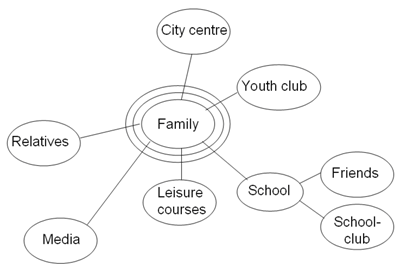
Figure 2: The "island model" by Helga Zeiher
The acquirement of new islands happens through a development of loose networks. Supported by means of transport and modern media, children experience these islands as no longer directly connected to nearer local environments.
Based on these two models, a new debate about social spaces has emerged from the 1990s onwards. The key idea of these socio-spatial approaches is the emphasis on interactive connections between inhabitants and their social and ecological environment. These are described by the idea of relationality: Spaces are no longer regarded as absolute entities, nor can they be considered as being absolutely relative (Kessl/Reutlinger 2007, 27). Instead they seem to be determined by the interaction of inhabitants and structures.
Furthermore, new ideas about social spaces also include the connection between local, regional, national and transnational influences. In this sense social spaces can be regarded as dynamic fabrics of social and material practices that are (re)produced permanently on different levels of (inter-)action. Following these ideas, social spaces are regarded as double structures with two connected perspectives (Deinet 2007, 113-120):
- The material and objective conditions and frameworks of life in a certain area. These structures of social spaces can be measured by socio-structural data about the socio-economical situation, habitat and buildings, family structures, educational standards, the frequency of the usage of public services, the identification of problem areas and gentrification. Most of the data can be collected through a quantitative research perspective; the top-down perspective and the views of policy-making and administration seem to be central. Sandermann/Urban (2007, 44) call this perspective "socio-geographical and infrastructural" perspective.
- The subjective perspectives of the inhabitants and service users that regard social spaces as their life world (Lebenswelt) and as public rooms that can be designed and acquired. Here the key focus lies on the subjective and qualitative dimensions of social spaces. Behaviour strategies can be explained on the background of individual and group based contexts of meaning that build the person's life world (Lebenswelt) ( Deinet 2006; 2007; Deinet/Krisch 2006). Most of these phenomena can be experienced through a qualitative research perspective. Here, the bottom-up perspective on acting individuals and their experiences seem to be central. Sandermann/Urban (2007, 47) call this perspective "acquiremental-theoretical and subject oriented" perspective.
The socio-spatial paradigm follows an interactive perspective that tries to focus on the mutual connection of these two dimensions. Social spaces are no finished "containers" but relational arrangements of humans and material goods at certain places that are always dynamical and changeable (Löw 2001, 271; Kessl/Reutlinger 2007, 21). Through the process of "spacing" people can acquire material places (Orte), form new relations and create new social spaces (Räume) with own qualities (Deinet 2006, 59). In this understanding, spaces are always socially determined. Also, this understanding allows several social spaces at one geographical place to be indentified. Social spaces can be altered and also vanish when their producers leave the place. Following this idea, social spaces can be regarded as small and temporary societies on local and regional levels (see Kessl/Reutlinger 2007, 23).
To cover the full socio-spatial dynamics, social space analyses need to focus on the interactive and relational interaction between individuals and social structures. The concept of the social space can be used as a metaphor for this perspective and help to analyse processes of social networking and relatedness.
2. How to analyze social spaces?
Social space analyses should be regarded as a form of practice research that can be carried out by social work practitioners or in a collaboration of practitioners and researchers (Deinet 2009, 59).
The analysis of social spaces needs to be able to focus on the dialectics of space and (social) development (Reutlinger 2009, 19). The focus of social space analyses should be on developmental perspectives and potentials within social spaces. Therefore, it seems to be necessary to find out more about different ideas of development of the actors (inhabitants, public institutions and professionals, politicians, interest groups, entrepreneurs, etc.) in a social space. Here, all contradictions and tensions could here be interesting as well as areas of common interest or consensus. Social space analyses should be sensitive to power: What is arranged in the space, who designs the order of the space, and how do spaces emerge through these arrangements.
The focus of social space analyses lies on relational connections, they should try to identify spatial differentiations and look for enabling perspectives for the participating persons and groups (Reutlinger 2009, 20).
To get a full perspective, social space analyses should be based on a mixed design of quantitative and qualitative research methods (Riege/Schubert 2005).
2.1 Quantitative approaches
Quantitative data help to represent the objective and material conditions of life in a certain social space as well as assessments of living conditions or attitudes towards special fields of interest. These data can be raised in own studies, for instance with questionnaires on the perspective of concrete living conditions from the view of inhabitants and professionals that are involved with the social space.
Regarded in a general way, empirical research in social sciences is the systematic study and survey of social phenomena. In this context, "empirical" means to verify theoretical theses by specific truths. This has to be done "systematically" and in agreement with the rules of good research practice. The process of research is determined by theoretical assumptions, the structure of the field of research and the available resources (Atteslander 2003, 5).
Pivotal Questions in empirical social research are:
- What will be measured / monitored?
This implies the specification of the objects of investigation. - Why will it be measured / monitored?
Empirical research always implies the context of genesis and exploitation. - How will it be measured / monitored?
This question deals with the used methods of collecting and analyzing social data.
Before going into detail as to how to perform an (quantitative) empirical study the following Figure 3 shall illustrate the main differences between quantitative and qualitative research designs.
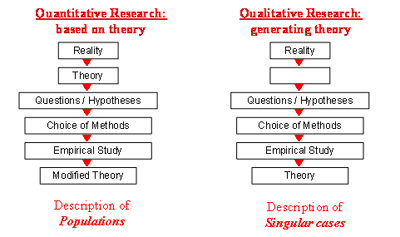
Figure 3: Description of quantitative and qualitative research designs
In the field of quantitative social research as well as in qualitative research a typical phrase states "The problem determines the method". That implies a proper operationalisation, i.e. to formulate hypotheses as empirical verifiable statements and an appropriate choice of instruments (which method of collecting data and which type of study is suitable?). And last but not least, it includes the choice of a reasonable methodology for analysing the data.
In order to perform empirical studies in an appropriate way researchers should be familiar with quantitative research designs, appropriate research methods, common performance criteria of empirical studies and also with statistical modelling of data and documenting and presenting results.
The typical schedule of a quantitative empirical study includes the following steps in chronological order (Ostermann 2005; Bortz/Döring 2006; Babbie 2003; Rossi/Freeman 1996; Bergs/Rossi 1998):
- Determination of the research topic / issues of interest
- Determination of target group (population)
- Determination of sample group
- Design and development of research instruments
- Data collection / study design
- Design of questionnaire
- ...
- Application of research instruments
- Evaluation / Analysis of information
- Management of data
- Statistical analysis
- Documentation / Presentation of results
Previous to field research, a clear definition of the issues of interest and also of the target group (population) / sample group is very important, including previous knowledge and, of course, a scientifically founded literature research. The design and development of research instruments raises the question, "Which method should be used depending on the problem of interest?". Researchers have to decide which type of study design is appropriate. Typical types are cross sectional studies, case-control studies, cohort or follow up-studies and even randomized controlled trials. In the field of social space analyses, often cross sectional study designs are applied. To collect the data of interest a highly structured experimental design (experiment), an observational design (observation) or a (standardized) survey can be choosen. While the first type is more often used in natural scientific, technical, psychological or medical applications, the last two designs are more common in socio-scientific applications. Standardized surveys are the classical instrument of population questioning and are typically carried out either in an oral manner by performing interviews (personally or telephonic) or in a written form (internet, questionnaire). The design of a questionnaire should follow common performance criteria in questions (high relevance concerning the problem, coverage of the whole affective component, avoidance of "common" issues, description of facts and leading questions, formulation of only one thought per item, using clear, brief and self-explanatory phrases, ...c.f. Bortz/Döring, 254ff, Ostermann/Wolf-Ostermann, 11ff) and the questionnaire in total must meet the typical standards of:
- Objectivity
Performance, evaluation, interpretation is independent of the user. - Reliability
Measuring precision is high. (Influence of measurement error) - Validity
Accuracy of results is high. (Is actually measured, what is intended to be measured?)
(Bortz/Döring, 193ff)
Before using the survey in the study an examination of the questionnaire by a pre-test is absolutely essential. The quality of the scientific data collection depends to a considerable degree on the quality "of the preliminary work" described here and lacking accuracy cannot be corrected later.
Formal aspects in carrying out the actual survey - especially when performing interviews - which should be obeyed - are:
- The institution / principal of the survey should be named,
- the intended purpose should be described,
- selection guidelines and duration of the survey should be explained,
- anonymity / data security must be assured,
- Voluntary participation must be pointed out.
(It is necessary to obtain a formal permission/informed consent and/or to comply with regulations to protect persons under age / children.)
Especially the last two issues are closely related to ethical principles in research (c.f. Bortz/Döring, 41ff, Sieber 1982, Trochim 2006)
The whole process of collecting data should be carefully documented, especially if there are deviations from the survey plan. After the actual field research, the data management (e.g. coding of answers, etc.) has to be carefully prepared and plausibility checks have to be implemented.
Beyond the named methods (experiment, observation, survey) quantitative studies can also be built on secondary data analyses of already existing data. This often is a way of gaining data in a very cost-efficient way, but at the expense that the data may not be "well-fitting". Secondary data are often gained in the context of social and town planning, poverty and income reports, statistics on employment, governmental issues, health issues and so on. Most municipalities and regions can provide a variety of data that were already raised according to spatial categories. Therefore, it should mostly be possible, in many cases, to gain data for a certain social space within a town or region and also for villages or areas.
Interesting data could include the statistics on the social structure that could be found according to categories like inhabitants, income, gender, age, migration, public health and the quota of welfare support receivers or joblessness. Here it would be useful to have current data and also data concerning the historic development. In Germany, these data are provided e.g. by the Federal Statistical Office [2] or the statistical offices of the federal states. For Europe the Statistical Office of the European Communities provides the European Union with a high-quality statistical information service [3].
Such national or supra-national data are also of special interest for addressing aspects of regional and transregional planning. More and more cities and regions try to be part of strategic development clusters that have to be regarded on a transnational and global level (Castells 2001, 431).
Regarding urban space as a proxy for demographic, structural, economic or behavioral variables, some municipalities base their entire social planning and distribution of resources for facilities around the ideas of certain social indicators and form social space budgets. Data around these social indicators could be of greater interest for social space analyses. For example, in Berlin, Germany, there exists a detailed atlas for data concerning social structures (Meinlschmidt 2009), which is open to the public. The atlas provides data of cross-sectional as well as follow-up studies analyses concerning a broad range of data dealing with structures of population and private households, employment, income, education and state of health. From the architectural or the town planning perspective, it could be also interesting to gain data on the public infrastructure, the building structure (houses, streets, places, etc.) and the further planning perspectives.
Researchers undertaking social space analyses based on quantitative methods should, in any case, have a well-founded knowledge of statistical methods for analyzing data, or otherwise the possibility to consult a statistician. First steps in analyzing data are preparing tables of frequencies, simple but effective charts, and the use of descriptive measures (mean values, ranges, correlations, ...) which can often explain much of the information hidden in the data. For more advanced researchers, a whole bundle of more complex, classical statistical techniques like analyses of (co-)variance, factorial analyses, cluster analyses and so on is available up to the point of statistical tools for (exploratory) spatial data analyses [4] (Cressie 1993; Goodchild/Janelle 2004; Unwin 1996).
2.2 Qualitative approaches
To identify the subjective impressions and the inhabitant's life world (Lebenswelt), Ulrich Deinet und Richard Krisch developed special research methods for social space analyses that are based in the context of qualitative research (Deinet 2002, 291/292; Deinet 2009, 65-86; Krisch 2009, 97-109; for the analysis of the data refer to literature on qualitative research like Denzin/Lincoln (1998) or Flick (2005). These methods are described in the following passages.
- Structured town walks (Stadtteilbegehungen): In this special type of observation researchers or social work practitioners try to find out more about a social space through a collection of impressions and perceptions that are gained in direct field experience (Deinet 2009, 66; Krisch 2009, 97 or http://www.sozialraum.de/stadtteilbegehung.php). Rather than looking for contact with inhabitants, the researchers look for atmospheric aspects and the social interaction in spaces. This method can be refined to "structured town walks" through the definition of fixed routes, and the use of field manuals that enable a higher density of observations. A special form are town walks with inhabitants to experience their impressions and living in concrete spaces (Deinet 2009, 68; Krisch 2009, 88). To reach a multiple and encompassing picture, it is important to discover a space with different groups and learn from their different experiences.
- Qualitative interviews with "key persons" (Befragung von Schlüsselpersonen): This method tries to grasp the views of "interesting" people about their social spaces (Deinet 2009, 70; Krisch 2009, 97 or http://www.sozialraum.de/befragung-von-schluesselpersonen.php). Key persons have to be identified in the local context, relevant persons could be local shopkeepers, youth workers, police men, teachers, health care staff, older inhabitants, etc. that have special and longer impressions on the social space and can share their experience. These interviews should last about 1 or 2 hours and be conducted as narrative interviews. To give the interviews more structure, it is also possible to use a questionnaire with open questions. This method is especially useful to gain deeper understanding when some other methods have been applied before.
- Needle method (Nadelmethode): This activating method gives a visualisation of places that are frequented by inhabitants and can be used to show the meaning of special places (Deinet 2009, 72; Krisch 2009, 97 or http://www.sozialraum.de/nadelmethode.php). Inhabitants are asked to pin needles on a city or district map with a higher resolution. They are encouraged to use certain colours for certain meanings. The colours can be coded with criteria like age, gender, "good" "bad" places or places of dislike, places that are often or never frequented, etc. The results can then be presented, compared and debated and assessed in different groups. An interesting capability of this method is the clear visualisation and the direct activation of people that can be quickly involved when passing by. For mobile use, the needle-maps can also be pinned on small boards of styrofoam that can easily be transported. Topographic software solutions like Google Maps or Google Earth offer new possibilities for this method.
- Peer group grids (Cliquenraster): This method is used to gain grounded descriptions of youth cultures and peer groups in a certain region (Deinet 2009, 79; Krisch 2009, 117 or http://www.sozialraum.de/cliquenraster.php). With structured questions, young people are asked about the peer groups they know in a certain area. In the basic form, the main categories are the name of the peer group, the number and age of the members, their outfit, their preferred music, the behaviour, their preferred places and possible conflicts around the group. Beyond these, all other categories of interest could be applied. After the collection of the data the results can be discussed with young people and local experts. The aim of this method is to gain a realistic overview of the different peer groups in a certain area, their connections and the possible interests of these groups. Based on such assessments, especially youth clubs, youth services and schools could find improved forms for activities to include the different peer groups. For young people it is often very attractive to be asked as "experts" about youth cultures and scenes in their area. Therefore, this method can lead to greater levels of participation. It would also be interesting to carry out peer group grids on groups of adults and their different life milieus. To our knowledge this has not been conducted very often, therefore it would here be interesting to gain more experiences.
- Subjective maps (Subjektive Landkarten): Inhabitants are encouraged to draw personal maps of their daily space of living (Deinet 2009, 75; Krisch 2009, 110 or http://www.sozialraum.de/subjektive-landkarten.php). These maps can be designed in open forms and drawers should be asked to show personal thoughts, meanings and perceptions of the space in the pictures. This method is a simplified form of narrative maps, and is used to show and share subjective life worlds. The maps show the outreach in the space, the most important contents and the subjective assessment of meanings, sizes and distances. With additional questions, the researcher can find out more about the subjective experiences. Here, the map can be used as a reference for open interviews with inhabitants. This method can also be applied in groups that are not too big and offer an atmosphere of mutual trust.
- Autophotography (Autofotografie): Inhabitants are asked to choose local places, to take photos with digital or mobile cameras of these places and to finally present, comment and interpret the pictures together with other involved persons (Deinet 2009, 78; Krisch 2009, 115 or http://www.sozialraum.de/autofotografie.php). The choice of the places should follow certain thematic aspects like "everyday places", "places of special interest", "ugly or beautiful places", etc. The pictures show the different individual perspectives on social spaces and allow debates about the design and the condition of spaces, support participation and debates about certain topics like places for certain groups, safety, infrastructure, etc. For good results, the group situations should not be too open and the clear aim of the method should be the common presentation and discussion of the pictures. To reach a stronger motivation, a final presentation for a larger audience can be planned.
- Time budgets (Zeitbudgets): Inhabitants are asked to draw a plan of their daily activities in a protected environment (Deinet 2009, 78; Krisch 2009, 134 or http://www.sozialraum.de/zeitbudgets.php). Time budgets can especially show the proportions of planned and unplanned activities and give interesting impressions in the different activities. For the spatial perspective, activities of leisure and public life can be connected to time-space-diagrams. Time budgets can be of special interest for the providers of social and public infrastructure. Especially, opening times and programs for different groups can be created more effectively when they aligned with the habits of the potential users and participants. The data analysis for this method can easily become very voluminous but this method is highly effective as a participatory form for target group analyses.
- Interviews about institutions (Institutionenbefragung): With the help of structured questionnaires, inhabitants are asked to give their assessment of their local public and social infrastructures like youth clubs, schools, day centres, social services, health institutions, etc. (Deinet 2009, 84; Krisch 2009, 149 or http://www.sozialraum.de/institutionenbefragung.php). With this method, researchers can find out which institutions are known in which context, and which strengths and weaknesses these institutions have in the spatial context. This method can be supplemented with staff interviews of these institutions. Here it would be interesting to finally compare the different perspectives.
In general, social space analyses should regard inhabitants as experts of their life world that deserve to keep their unique dignity and interests. Therefore, the methods for social space analyses should be carried out according to the ethical aspects of research. This means to protect personal data through anonymisation and to inform all participants fully about the intentions and the participating interests of the research project and to point out the fact that participation is voluntary. In this sense, it is also important to keep aspects of power in mind and to ask who will benefit from the results and whether the researcher intends to have this benefit. Also, it is important to keep participant's expectations realistic; not every interview or short participation process can lead to direct impacts and the fulfilment of all wishes of interviewed persons. In any case, it is certain that researchers undertaking social space analyses should have a profound knowledge of (quantitative and qualitative) research methods and their strengths but also their limitations.
3. A case study of a short social space analysis in Lund/Sweden
The following will show a practical example of social space analysis that has been carried out during an Erasmus teaching staff exchange between Alice-Salomon-University of Applied Sciences Berlin and Lund University in September 2008, for undertaking a teaching project with Swedish M.A. students in social work and social sciences. The intension was to introduce the idea and the methods of social space analysis to the students and then perform a joined study in a social situation familiar to the students. Therefore, the area of Klostergården/Lund (see Figure 4) was selected as an example of a well-defined area that allowed developing clear objectives.
Since we were limited to three days of study, we decided to aim at a realistic approach and called the space analysis a "social space discovery". For a full analysis, we would have needed more time and more involved partners in Klostergården.
The concrete topics of the "social space discovery" were the following:
- Who lives at Klostergården?
A secondary data analysis of the residential statistics of the area of Klostergården in Lund was undertaken in order to give the necessary background to be able to assess the target group and possible relevant topics. - Historic awareness and experiences in the area of St Lars Hospital.
The aim of this study was to explore the historical awareness of the old hospital area of St Lars among people spending time there. The main research question was: Does the historical knowledge of the area affect how people experience the area? Research methods used were semi-structured interviews. - Public safety
The objective was to find out perceptions about the public safety at the area of Klostergården. Therefore the needle method was used with people living or working there whether they would feel secure at the area. Additionally, the research group asked why these places were regarded as safe/unsafe. - Life Quality
The main research question for this topic was to identify the impact of the history of the mental hospital to the residents living next to the institution. The research was done by undertaking interviews (face-to-face, by telephone) with structured questionnaires. - The future of Klostergården
The intention was to find out how the plans to build new expensive penthouses would affect the opinions of residents about their area. As methods structured walks and a survey of residents were used.
The students worked together in small research teams consisting of two to five persons. At the end of the three days of field research, they presented the results in a small public workshop.
The main results were:
- Who lives at Klostergården?
The area of Klostergården / St Lars is situated in the south of Lund. Klostergården is a typical living area with mostly blocks of flats and high-rise buildings. St Lars, on its left hand, is a park area which is used to host one of Sweden's largest mental health institutions. Today, St Lars is transformed to an area which includes a variety of different activities, combining widespread walking grounds and nature with business organisations, day nurseries and schools. St Lars still hosts many social institutions such as a psychiatry emergency ward, and locked institutions for the treatment of drug addicts, psychiatry patients and convicts sentenced to forensic psychiatric treatment.
The area has a total population of about 5.000 inhabitants, which is nearly 5% of the population of Lund. The percentage of inhabitants born abroad is slightly higher than in total Lund (19 % vs. 15 %) and the percentage of receivers of social allowance is higher (7.3 % vs. 3.1%). The average income is slightly lower than the Swedish average. The housing situation is dominated by (rental) apartments, unlike other parts of Lund. The student research group identified the characteristic inhabitant of Klostergården as being of age 20-40, born in Sweden (81%), having an university education (36%), being gainfully employed (64%), renting a (larger) appartment (63%) and having an average income of 212 300 SEK/year.
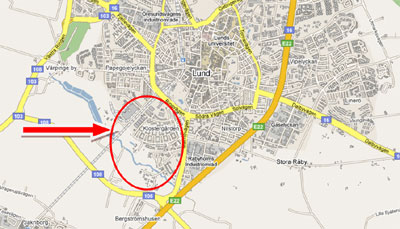
Figure 4: City-map Lund (source: http://www.lund.a-sweden.com/map)
- Historic awareness and experiences in the area of St Lars Hospital
St Lars is a large park area located on the periphery of Lund. The old hospital area of St Lars was formerly a mental institution built in the late nineteenth century. Today, the old hospital area holds several different kinds of institutions, for example schools, day care centres and health care services. The main results of this research group undertaking 10 semi structured interviews were: All the informants (4 living in Lund, 6 living off-site Lund, aged 15-47 years) knew that the old hospital area formerly was used as a mental institution. None of the informants could answer more specific questions about the hospital and the old hospital area. About 80% of the informants had a positive attitude towards the area (c.f. Figure 5), positive keywords mentioned were "green, calm, beautiful", negative keywords were "dark/scary/dangerous at night, closeness to methadone center, a place for mental patients only". Neither sex, age, residential status or reason for being there seemed to have an impact on how the informants experienced the area. However, there was a difference between the sexes in their personal attitudes towards the area. All of the female informants thought that other people had a negative attitude towards the area. Three out of four men thought others had a positive attitude towards the area. Age, residence or reason for being in the area did not seem to matter significantly.
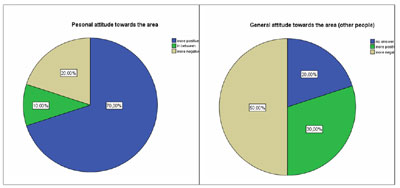
Figure 5: Attitudes towards the area of St Lars Hospital
- Public safety.
A random sample of 20 persons was selected while visiting the area of Klostergården, 11 of them being residents of Klostergården. The sample consisted of 12 women (14-93 years) and 8 men (13-78 years). Research hypotheses concerning differences in gender, age and beeing a resident of Klostergården were:
a) Women feel more insecure at night.
b) Older people feel more insecure.
c) The own living area is regarded as a "safe place".
Places regarded to be "safe places" (c.f. figure 6) are typically their own living areas. As "insecure places", St Lars Park was named because of the risk of assaults, rape and patients escaping the facilities. Also, Klostergården Centrum was mentioned by people that were afraid of youth groups.

Figure 6: Places of feeling secure / insecure
In general, the results of the needle method and the additional interviews seemed to support the research hypotheses.
- Life Quality
To analyse the impact of the mental hospital on the residents living next to the institution, 30 interviews with structured questionnaires (face-to-face and telephonic) were carried out. In detail, the questionaires regarded the following questions:
What do the inhabitants of Klostergården associate with St Lars?
Do the inhabitants of Klostergården feel affected by the fact that the St Lars area hosts a number of social institutions including psychiatric care and treatment of drug addicts?
Do the attitudes towards the St Lars area differ between inhabitants of Klostergården depending on their type of household (rental apartment vs. bought apartment)?
Are there any other items relevant (e.g.; age, gender, education level, etc.) to the understanding of the inhabitant's attitudes towards the St Lars area?
The proportion of respondents to the questionnaire living in rental apartments and those respondents living in bought apartments was chosen to be equal (n=15) in order to analyse differences between these two groups. Generally, a very positive attitude towards the St Lars area amongst the people living at Klostergården could be found. Age, education level and apartment type did not have an impact on the attitudes towards the psychiatric institution. People who recently moved to this area more often had the connotation of "park, green area". In contrast, residents living for more than 20 years in the area thought more often of "psychiatric care" (see Figure 7).
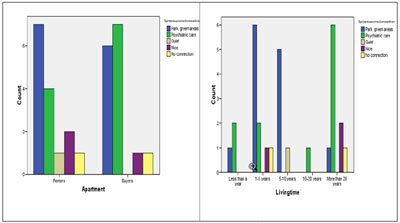
Figure 7: Associations with living in the area of Klostergården / St Lars
- The future of Klostergården
- During the 80's and the 90's of the last century there has been a constant expansion of Klostergården. The area of Regnbågen was created south of Sunnanväg. The expansion continued during the first year of 2000, and many new buildings and apartments were built. Lundabostäder is planning to build penthouses at Sunnanväg and Gråvädersväg in the eastern part of Klostergården. The company Mandmus/Akelius is planning to build 300 new student apartments closer to the centre of Lund. At the moment there is an ongoing debate concerning a controversial building plan. Using structured walks and performing questionnaires with 22 residents of the area, the attitudes towards plans to build new expensive penthouses were analysed. The main statements addressed to the residents were
Q1: The expansion of Klostergården has made the area as a whole more aesthetically appealing.
Q2: The expansion of Klostergården has led to an increased general feeling of safety in the area as a whole.
Q3: The expansion of Klostergården has led to an increased diversity in the area.
Q4: The expansion of Klostergården has made the general living enviroment more pleasant.
The results showed remarkable differences: In general there was a greater agreement on questions Q3 and Q4 (59% explicit consent). Women (n=12) had a clearly more negative attitude towards the statements, men (n=10) responded more positively (see Figure 8) Noticeable differences between younger residents (0-59 years, n=12) and older residents (60-90 years, n=10) could not be established (see Figure 9)
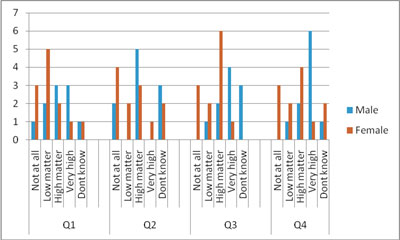
Figure 8: Attitudes towards the expansion of Klostergården by gender
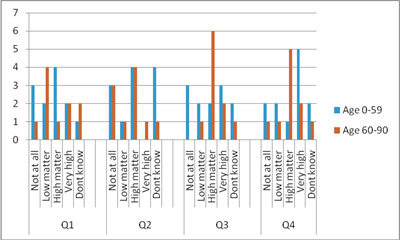
Figure 9: Attitudes towards the expansion of Klostergården by age
Survey based suggestions for improvements mostly concerned infrastructural topics. These ranged from detailed suggestions for the supply of necessary goods and services (bank/cash dispenser, postal service, larger variety of convenience stores, better restaurants) to the enhancement of the surrounding (renovate the outside parts of the buildings, clean up / renovate the centre) as well as to suggestions concerning more general the public utility infrastructure (youth club, home for the elderly, higher police presence).
4. The socio-spatial paradigm in social work - an outlook
The theoretical considerations and the case study show the necessity and the potentials to establish spatial approaches within social work and social sciences. A grounded spatial sensitivity allows gaining an understanding of social spaces that reaches beyond the otherwise often individualistic and single-case oriented concepts of social work. Also, this perspective enables interesting collaborations between social work practitioners and researchers.
In the future, socio-spatial approaches could be applied in the context of a social development perspective that follows the aims to shape positive living conditions and structures as well as the improvement of the inclusion and participation of local residents (Homfeldt/Reutlinger 2009). In this sense, socio-spatial approaches would search for solidarities and try to enhance local networks (Reutlinger 2009, 29). Spatial approaches in social work could aim to revitalise public spaces and look for an improved collaboration of social work, social policy and youth policy (Deinet 2002, 294).
Under the term of "social space work" (Sozialraumarbeit) Reutlinger and Wigger (2008) try to bring three areas of public activities together:
- The client's and resident's perspective
- The administrative perspective around social services, public administration, school and health care
- The town planner's and architectural perspectives around the planning and development of buildings and built infrastructure.
This approach seems to be very promising, but naturally the integration of such different areas would bring a variety of challenges for the involved institutions. For these efforts there seems to be one common denominator: The "socio-spatial view" as a basis for collaboration of different partners for the improvement of local living conditions and the social, educational and healthcare services (Deinet 2002, 295).
References
Atteslander, P. (2003): Methoden der empirischen Sozialforschung, 10th edition, Berlin, New York.
Baacke, D. (1984): Die 6-12jährigen. Weinheim.
Babbie, R. E. (2003): The Practice of Social Research. 10th edition, Belmont.
Bachmann-Medick, D. (2006): Cultural Turns. Neuorientierungen in den Kulturwissenschaften. Reinbek.
Bergs, R. / Rossi, P. (1998): Thinking about Program Evaluation, Thousand Oaks.
Böhnisch, L. / Münchmeier, R. (1990): Pädagogik des Jugendraums. Zur Begründung und Praxis einer sozialräumlichen Jugendpädagogik. Weinheim.
Bortz J / Döring N (2006): Forschungsmethoden und Evaluation für Human- und Sozialwissenschaftler. 4th edition, Berlin, New York.
Bronfenbrenner, U. (1979): The ecology of human development. Cambridge.
Budde, W. / Früchtel, F./ Hinte, W. (eds.) (2006): Sozialraumorientierung. Wege zu einer veränderten Praxis. Wiesbaden.
Bunge, M. (1996): Finding Philosophy in Social Science. New Haven.
Castells, M. (2001): Das Informationszeitalter I. Die Netzwerkgesellschaft. Opladen.
Cressie, N. (1993): Spatial Statistics. New York.
Deinet, U. (2002): Der >>sozialräumliche Blick<< der Jugendarbeit - ein Beitrag zur Sozialraumdebatte. In: neue praxis, (32), 285-296.
Deinet, U. (2006): Aneignung und Raum - sozialräumliche Orientierungen von Kindern und Jugendlichen. In: Deinet/Gilles/Knopp (2006), 44-63.
Deinet, U. (2007): Sozialräumliche Konzeptentwicklung und Kooperation im Stadtteil. In: Sturzenhecker/Deinet (2007), 111-137.
Deinet, U. (ed.) 2009: Methodenbuch Sozialraum. Wiesbaden.
Deinet, U. / Gilles, C. / Knopp, R. (eds.) (2006): Neue Perspektiven in der Sozialraumorientierung. Dimensionen - Planung - Gestaltung. Berlin.
Deinet, U. / Krisch, R. (2006): Der sozialräumliche Blick der Jugendarbeit. Methoden und Bausteine zur Konzeptentwicklung und Qualifizierung. 2nd edition, Wiesbaden.
Deinet, U. / Reutlinger, C. (eds.) (2004): 'Aneignung' als Bildungskonzept der Sozialpädagogik. Beiträge zur Pädagogik des Kindes- und Jugendalters in Zeiten entgrenzter Lernorte. Wiesbaden.
Denzin, N. / Lincoln, Y (1998): Collecting and Interpreting Qualitative Materials. Thousand Oaks.
Dünne, J. / Günzel, S. (eds.) (2006): Raumtheorie. Grundlagentexte aus Philosophie und Kulturwissenschaften. Frankfurt a.M.
Edwards, R. L. / Hopps, J. G. (eds.) (1996): Encyclopedia of Social Work. 19th edition, Washington.
Engelke, E. / Borrmann, S./ Spatscheck, C. (2008): Theorien der Sozialen Arbeit. Eine Einführung. 4th edition, Freiburg i. Br.
European Commission
http://epp.eurostat.ec.europa.eu/portal/page/portal/eurostat/home [2009/06/30]
Flick, U (2005): Qualitative Sozialforschung. Eine Einführung. 3rd edition, Reinbek.
Geiser, K. (2007): Problem- und Ressourcenanalyse in der Sozialen Arbeit. Eine Einführung in die Systemische Denkfigur und ihre Anwendung. 3rd edition, Freiburg i.Br.
Goodchild M.F. / Janelle, D.G. (eds.) (2004): Spatially Integrated Social Science. Oxford.
Grundmann, M. / Kunze, I. (2008): Systematische Sozialraumforschung: Urie Bronfenbrenners Ökologie der menschlichen Entwicklung und die Modellierung mikrosozialer Raumgestaltung. In: Kessl/Reutlinger (2008), 172-188.
Hinte, W. (2006): Geschichte, Quellen und Prinzipien des Fachkonzepts „Sozialraumorientierung". In: Budde/Früchtel/Hinte (2006), 7-24.
Homfeldt, H. G. / Reutlinger, C. (2009): Soziale Arbeit und Soziale Entwicklung. Baltmannsweiler.
Hosemann, W. / Geiling, W. (2005): Einführung in die systemische Soziale Arbeit. Freiburg i.Br.
Karls, James M. / Wandrei, Karin E. (eds.) (1994): Person in Environment System: The PIE Classification for Social Functioning Problems. Silver Spring.
Karls, James M. / Wandrei, Karin E. (1996): Person-in-Environment. In: Edwards,/Hopps (1996), 1818-1827.
Kessl, F. / Reutlinger, C. / Maurer, S. / Frey, O. (eds.) (2005): Handbuch Sozialraum. Wiesbaden.
Kessl, F. / Reutlinger, C. (2007): Sozialraum. Eine Einführung. Wiesbaden.
Kessl, F. / Reutlinger, C. (eds.) (2008): Schlüsselwerke der Sozialraumforschung. Traditionslinien in Text und Kontexten. Wiesbaden.
Kleve, H. (2007): Ambivalenz, System und Erfolg. Provokationen postmoderner Sozialarbeit. Heidelberg.
Kleve, H. (2008): Sozialraumorientierung - eine neue Kapitalismuskritik in der Sozialen Arbeit? In: Spatscheck et al. (2008), 76-93.
Kleve, H. / Haye, B./ Hampe-Grosser, A./ Müller, M. (2006): Systemisches Case Management. 2nd edition, Heidelberg.
Kraus, B (2002): Konstruktivismus - Kommunikation - Soziale Arbeit. Radikalkonstruktivistische Betrachtungen zu den Bedingungen des sozialpädagogischen Interaktionsverhältnisses. Heidelberg.
Krisch, R. (2009): Sozialräumliche Methodik der Jugendarbeit. Aktivierende Zugänge und praxisleitende Verfahren. Weinheim.
Löw, M. (2001): Raumsoziologie. Frankfurt a.M.
Löw, M. / Steets, S. / Stoetzer, S. 2008: Einführung in die Stadt- und Raumsoziologie. 2nd edition, Opladen.
Meinlschmidt, G. (ed.) (2009) Sozialstrukturatlas Berlin 2008 - Ein Instrument der quantitativen, interregionalen und intertemporalen Sozialraumanalyse und -planung - Spezialbericht 2009-1. Berlin.
Obrecht, W. (2001): Das Systemtheoretische Paradigma der Disziplin und der Profession der Sozialen Arbeit. Zürich.
Ostermann, R. / Wolf-Ostermann, K. (2005). Statistik in Pflege und Sozialer Arbeit. 3rd edition, München.
Pantucek, P. (2005): Soziale Diagnosen. Verfahren für die Praxis Sozialer Arbeit. Wien.
Preuss-Lausitz, U. / Deutsche Gesellschaft für Soziologie. Arbeitsgruppe Wandel der Sozialisationsbedingungen seit dem Zweiten Weltkrieg. (1983): Kriegskinder, Konsumkinder, Krisenkinder. Berlin.
Riege, M. / Schubert, H. (eds.) (2005): Sozialraumanalyse. Grundlagen, Methoden, Praxis. 2nd edition, Wiesbaden.
Reutlinger, C. (2009): Raumdeutungen. Rekonstruktion de Sozialraums „Schule" und mitagierende Erforschung „unsichtbarer Bewältigungskarten" als methodische Felder von Sozialraumforschung. In: Deinet (2009), 17-32.
Reutlinger, C. / Wigger, A. (2008): Von der Sozialraumorientierung zur Sozialraumarbeit - eine Entwicklungsperspektive für die Sozialpädagogik. In: Zeitschrift für Sozialpädagogik (6) 340-372.
Rossi, P. / Freeman, H. E. (1996): Evaluation: A Systematic Approach. Newbury Park.
Sandermann, P. / Urban, U. (2007): Zur >Paradoxie< der sozialpädagogischen Diskussion um Sozialraumorientierung in der Jugendhilfe. In: neue praxis (37), 42-57.
Sieber, J. E. (1982): Planning Ethically Responsible Research. A Guide for Students and Internal Review Boards. Newbury Park.
Snow, J. (1854): In: Stamp, L. D. (1964), A Geography of Life and Death, Ithaca, N.Y.
(http://www.york.ac.uk/depts/maths/histstat/snow_map.htm or
http://www.csiss.org/classics/content/8).
Spatscheck, C. (2009): Methoden der Sozialraum- und Lebensweltanalyse im Kontext der Theorie- und Methodendiskussion der Sozialen Arbeit. In: Deinet (2009), 33-44.
Spatscheck, C. / Arnegger, M. / Kraus, S. / Mattner, A. / Schneider, B. (eds.) (2008): Soziale Arbeit und Ökonomisierung. Analysen und Handlungsstrategien. Berlin.
Statistisches Bundesamt
http://www.destatis.de/jetspeed/portal/cms/Sites/destatis/Internet/EN/Navigation/Homepage__NT.psml [2009/06/30]
Staub-Bernasconi, S. (2007): Soziale Arbeit als Handlungswissenschaft. Ein Lehrbuch. Bern.
Sturzenhecker, B. / Deinet, U. (eds.) (2007): Konzeptentwicklung in der Kinder- und Jugendarbeit. Reflexionen und Arbeitshilfen für die Praxis. Weinheim.
Trochim, W. M. K. (2006): Research Methods Knowledge Base. http://www.socialresearchmethods.net/kb/ethics.php [2009/07/26]
Unwin, A. R. (1996): Exploratory spatial analysis and local statistics. Computational Statistics (11), 387-400.
Zeiher, H. (1983): „Die vielen Räume der Kinder. Zum Wandel räumlicher Lebensbedingungen seit 1945". In: Preuss-Lausitz (1983).
This text is based on a social space analysis that was formerly described at: Spatscheck, Christian/ Wolf-Ostermann, Karin (2009): Social Space Analyses and the Socio-Spatial Paradigm in Social Work. Working Paper 2009-1, School of Social Work, Lund University.
The publication of this new text is kindly approved by the School of Social Work of Lund University.
Fussnoten
[1] In the current German debate the term "Soziale Arbeit" (social work) is used as an umbrella term for "Sozialarbeit" (social work with adults) and "Sozialpädagogik" (social pedagogy with children and youth)
[2] Statistisches Bundesamt http://www.destatis.de/jetspeed/portal/cms/Sites/destatis/Internet/EN/Navigation/Homepage__NT.psml
[3] European Commission http://epp.eurostat.ec.europa.eu/portal/page/portal/eurostat/home
[4] One of the first uses of map-based spatial analysis is the map of Dr. John Snow showing clusters of cholera cases in the 1854 London cholera outbreak (Snow, J. (1854): http://www.york.ac.uk/depts/maths/histstat/snow_map.htm or http://www.csiss.org/classics/content/8).
Zitiervorschlag
Spatscheck, Christian und Karin Wolf-Ostermann (2009): The Socio-Spatial Paradigm in Social Work – Social Space Analyses as Method for Practitioners and Researchers. In: sozialraum.de (1) Ausgabe 2/2009. URL: https://www.sozialraum.de/the-socio-spatial-paradigm-in-social-work.php, Datum des Zugriffs: 21.01.2025

